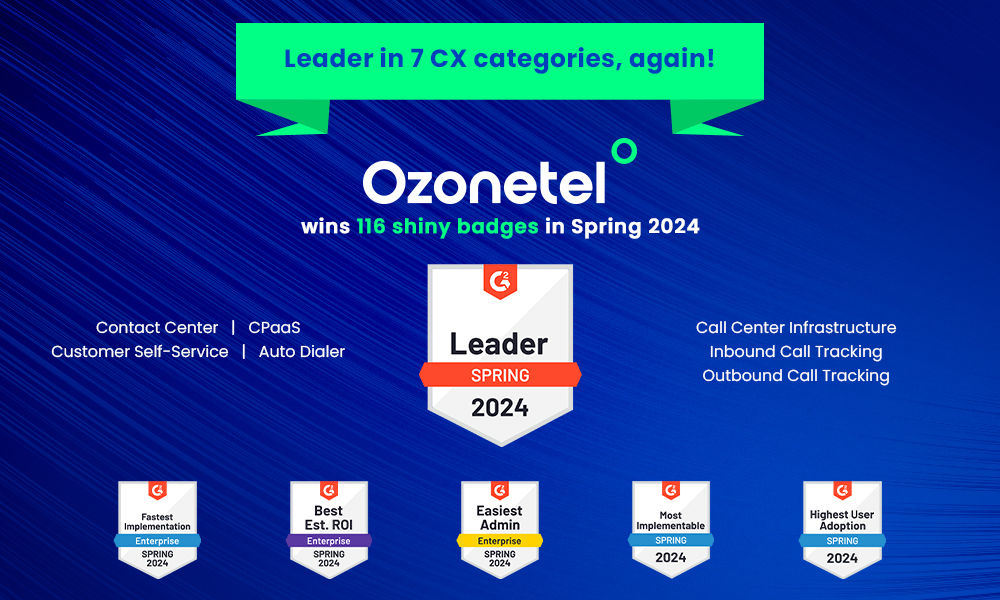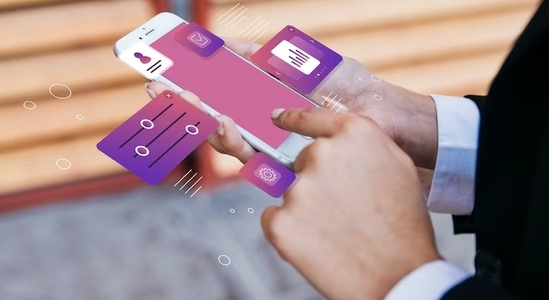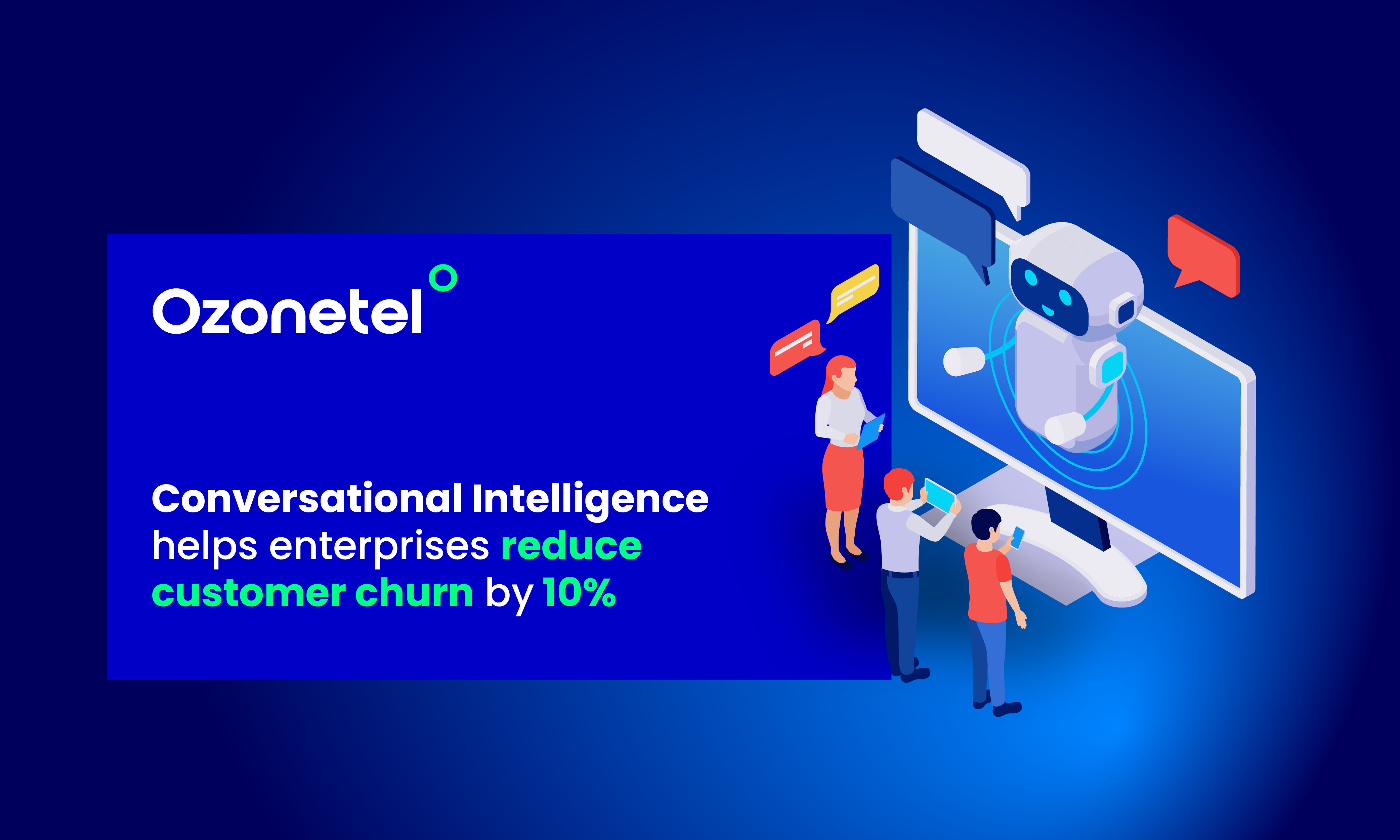- Resources
- 6 Ways to Create Amazing Healthcare Experiences with Omnichannel CCaaS
6 Ways to Create Amazing Healthcare Experiences with Omnichannel CCaaS

The fundamental imperative for any healthcare organization is to ensure a continuous and streamlined patient experience. In this healthcare landscape which traditionally revolves around human interactions, the industry is gradually recognizing the need to evolve — embracing advanced healthcare systems and patient engagement tools.
However, this transition has not been without challenges. This includes fragmented communication between management, patients, and on-field staff which causes inefficiencies, poor patient experiences, inconsistent messaging, and missed engagement opportunities.
Without a comprehensive view of the patient journey, healthcare providers often struggle to deliver the optimal experience. This is where omnichannel patient engagement comes into play, connecting offline and online patient interactions to effectively bridge these gaps.
Omnichannel CCaaS unites disparate communication methods – calls, emails, chat, WhatsApp, and social media – into a single platform. When used in healthcare, it creates a consistent patient experience across all communication channels. It also simplifies processes for healthcare companies, helping them to track interaction and analyze data for better service, support, and higher customer satisfaction.
In this article, we will explore:
The healthcare sector often lags other industries in providing high levels of customer satisfaction and customer experience. This could be attributed to various factors such as
- Accessibility challenges hinder patients’ from understanding and accessing the right services.
- Operational inefficiencies increase costs, errors, and compromise care quality.
- Lack of trust arises due to the sensitive nature of health issues, associated costs, and risks.
- Complexity of communication channels makes managing appointments, tests, and reports challenging.
Today, creating a personalized patient experience has evolved from being a mere choice to an absolute necessity.
Because communication is at the heart of creating these excellent patent experiences, healthcare companies must leverage Omnichannel CaaS to boost communication and engagement between patients, healthcare providers, and staff members.
Transforming healthcare CX with Omnichannel CCaaS
A unified platform for omnichannel Healthcare CX establishes streamlined communication, simplifies management, and reduces costs significantly while improving customer experience (CX) in healthcare.
- Streamlined patient data for personalized communication
- Patient-centric engagement on their preferred channels
- Efficient patient and healthcare staff communication
- Improved decision-making via data analytics and insights
- Elevated remote care approach with telehealth integration
- Enhanced patient-centric care framework
Here are six ways healthcare companies must leverage omnichannel CCaaS to transform patient experiences and create higher loyalty, customer satisfaction, and customer lifetime value:
1. Streamline patient data for personalized communication
Implementing omnichannel CCaaS in healthcare enables seamless integration of patient data from various sources. By consolidating electronic health records, medical imaging, lab results, appointment systems, insurance records, pharmacy records, and other data, the platform provides a 360-degree view of each patient’s profile.
Healthcare firms and hospitals can get a comprehensive understanding of the patient’s medical history and preferences, thereby allowing them to personalize their communication. Centralized patient data will ensure that their agents have timely access to information, leading to more meaningful interactions. This eliminates the need for patients to endure lengthy holds or transfers due to missing records, ultimately leading to higher satisfaction.
2. Patient-centric engagement on their preferred channels
Today, patients choose to engage with family, friends, and brands on a wide range of communication channels. This includes traditional phone calls, websites, mobile apps, SMS, and WhatsApp. A robust omnichannel CCaaS platform helps healthcare organizations to interact with patients on all these channels in a consistent manner.
Patients can easily schedule or reschedule appointments, access their records and test results, and even engage in teleconsultations, all from the convenience and security of their chosen platform. Additionally, a unified CCaaS solution will make it easy for patients to switch between different communication channels, without having to repeat information.
By offering this omnichannel approach, healthcare organizations demonstrate their commitment to staying current, reducing accessibility issues and helping patients communicate with them easily.
3. Efficient patient and healthcare staff communication
The total cost of missed healthcare appointments is a staggering $150 billion. These missed appointments not only result in financial losses but also disrupt patient care and the overall efficiency of healthcare.
With features like automated reminders, callbacks, and self-service Interactive Voice Response (IVR), healthcare providers can minimize the impact of missed appointments to a great extent. These tools ensure that patients receive timely reminders for upcoming appointments, allowing them to conveniently reschedule, confirm, or make new appointments. This enhances patient engagement and contributes to improved healthcare outcomes.
4. Better decision-making via data analytics and insights
Omnichannel CCaaS platforms offer robust analytics, which can help healthcare firms and hospitals identify gaps and areas for growth. By analyzing data from diverse touchpoints healthcare organizations can understand patient behaviors and significantly improve outcomes.
The data is also instrumental in running effective marketing campaigns, which educate patients about new products and their potential benefits. This leads to better treatment choices that align with their needs and preferences. Moreover, when patients are aware of their available options, they can actively participate in discussions with healthcare providers, leading to more personalized and effective treatment plans.
5. Improve remote care and teleconsultations
The advent of telehealth, especially post-COVID, has transformed how healthcare is accessed and delivered. While video consultations are popular, in India, many patients prefer simple phone calls. An omnichannel platform can help connect patients securely and fast to remote healthcare providers. Firms can leverage virtual numbers, after-call work hours, call recording, and self-service IVR to manage these phone calls with ease.
This remote access to healthcare services accommodates diverse patient needs and schedules, ultimately contributing to a better experience, higher patient satisfaction, and improved healthcare outcomes.
6. Create patient-centric care framework
An effective omnichannel CCaaS platform empowers healthcare organizations to embrace the patient-first approach, which is rooted in establishing trust and fostering patient confidence.
Healthcare providers can personalize care and communication based on the patient’s medical history and preferences, which fosters a sense of care and compassion. The result is increased patient satisfaction, improved outcomes, and an elevated standard of healthcare delivery.
The way forward to transform customer experience in healthcare
The process of boosting patient experience in healthcare through omnichannel CCaaS is a journey with immense potential and possibilities. As we move forward, this becomes a defining step in reshaping the way healthcare is delivered and experienced.
The shift towards a patient-centric approach not only modernizes the healthcare industry but also ensures that patient satisfaction and experience at every touchpoint is elevated.
To begin this journey, healthcare organizations are encouraged to select a suitable omnichannel CCaaS platform that enables them to transform patient interactions and caregiving methods. This step plays a vital role in establishing the groundwork for an enhanced, patient-centered healthcare experience.
Want to Build Meaningful Patient Relations with Ozonetel’s Innovative CX Platform?
Frequently Asked Questions
To transform the patient experience, healthcare service providers should prioritize patient needs & comfort, and offer tailored services that evolve with a patient on their journey. This would involve focusing on various aspects, such as clear communication, reduced waiting times, attentive staff, comfortable facilities, streamlined administrative processes, and offering support throughout the patient journey.
Creating a better patient experience involves improving communication, enhancing access to care, providing personalized treatment, streamlining processes, and incorporating patient feedback for continuous improvement. These efforts cultivate an environment of trust, comfort, and effective healthcare delivery.
Following are the four pillars of patient experience.
- Clinical Excellence: Providing high-quality medical care and treatment.
- Service Excellence: Delivering exceptional customer service and responsiveness.
- Operational Excellence: Streamlining processes to enhance efficiency and minimize disruptions.
- Empathy and Communication: Displaying empathy, effective communication, and patient-centered interactions.
Customer experience in a hospital encompasses the sum of patient interactions and impressions, from initial contact to post-treatment follow-ups. It involves factors like ease of appointment scheduling, wait times, the behavior of staff, cleanliness, communication of medical information, and the overall feeling of care and support received.
Healthcare can improve patient experience by implementing several measures, such as:
- Enhancing Communication: Clear and empathetic communication with patients and their families.
- Reducing Wait Times: Implementing strategies to minimize wait times for appointments and procedures.
- Personalizing Care: Tailoring treatment plans and services to individual patient needs.
- Emphasizing Empathy: Training staff to show empathy and compassion towards patients.
- Incorporating Technology: Using technology for seamless scheduling, telehealth, and access to medical records.
- Collecting Feedback: Actively seeking patient feedback to identify areas for improvement.
Prashanth Kancherla
Chief Operating Officer, Ozonetel Communications
Over the past decade, Prashanth has worked with 3000+ customer experience and contact center leaders...
Chief Operating Officer, Ozonetel Communications
Over the past decade, Prashanth has worked with 3000+ customer experience and contact center leaders to comprehensively understand the need for effective and efficient customer communications at every step of their journey with a brand. Deeply embedded in today’s CCaaS ecosystem, he has been instrumental in Ozonetel's growth and contributed in various roles including product management, sales, and solution architecture.







